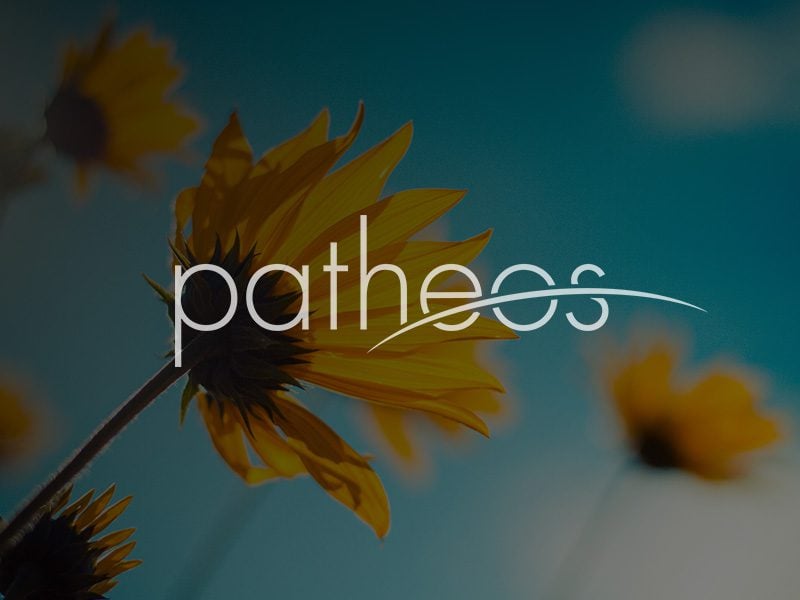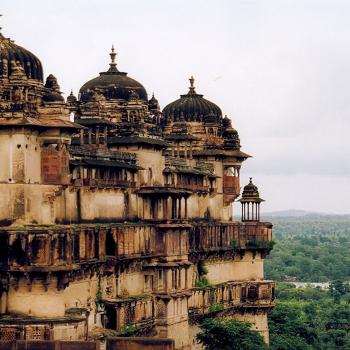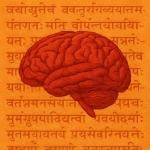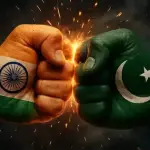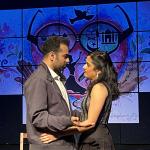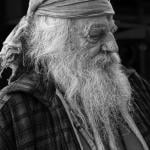Divine Truth, artistically represented to perception and feeling, forms the center of the whole world of art. Truth however, as is often said, is half concealed and half revealed and hence needs closer acquaintance and association, before its full beauty is revealed. The artist in man feels it, is inspired by it, and feels happy and elevated in conveying to others the golden touch of Art. When this process resolves itself into a well ordered and accomplished fact, art makes over its conquests to science and sets forth to explore unknown regions in the “Land of the Beautiful.”
The development of Indian Classical Music is not an exception to the above rule. The cries of the birds and the beasts, such as the cooing of the cuckoo or the neighing of the horse were among the principal musical occurrences to catch the fancy of the early artist. From such small and simple beginnings music in India had grown into a well developed art, as far back as history can reach.
Indian Classical Music in the Vedas
In the Vedic period, the hymns were set to tune and rhythm and so there soon came into existence a class of singer priests. The hymns needed accurate pronunciation and emphasis on particular syllables and words and extended over a fairly long duration of time. Their chanting, therefore, required great modulation of voice and insertion of intermediate pauses. Thus unconsciously, the essentials both of melody and rhythm came into prominence. In the early stages, the melody was bound to be prim and curt. Gradually, the limits were widened and it moved through a fairly large portion of the scale. What was true of melody was equally true of rhythm. From simple accent and a pause, the rhythm developed into a science of ever-growing and varied cycles of time-keeping. This resulted in a greater polish in the practice of the art and before long, a theory or rather a grammar of music partly based on observed facts and partly on hypothetically prepossessions came into existence.
The Vedic hymns were however too grave and rigid a subject for so plastic and subtle an art as music. Eventually, music made a move towards the lighter side of life, and was more at ease with it, as it always has at its command a rare wealth of emotional appeal. On this account, music has always been considered to be the fittest medium to express the joys and sorrows the languishing hopes and despairs and the thousand and one little vanities of the human race. It is no wonder, therefore, if its field of activity soon shifted from the altar to the stage. Thus there were performers for all occasions, religious or festival. There was already the singer priest who perhaps in course of time became the temple singer. There was the traveler – as he is even today – who went round the country and entertained the country folk. Lastly, there were reputed actors and actresses, who performed for the kings or for people of more urbane tastes.
This really marked the beginning of a true and classical form of music. So, the popular practices of the earlier period were abandoned and several innovations were adopted, as the result of a close observation of the nature of musical sounds. The stage-opera of those days consisted of vocal as well as of a number of instrumental performers. Among the instruments, there were stringed instruments of many kinds – some to be directly plucked and played and others to be played with a bow. There were in addition, flutes, horns, cymbals and drums of many kinds. These facts clearly show that in those days, music was on the high road to advancement. The oldest and probably the first detailed exposition of the Theory of Indian Classical Music belongs to this period. (Here are a few more interesting facts about India if you’re interested). In the “Natya Shastra” or the Science of Dramaturgy, the sage Bharat (prior to 300 B.C.) gives a clear and detailed account of the Swaras – musical notes, of the Shrutis – the microtonal intervals between the successive degrees of the scale, of the two Gramas – parent scales, and of the Murchanas – scales obtained by transposition. He has further given a detailed account of an experimental method for deducing the Shruti-ratios. The method is rather crude, yet its merit is in the fact that it is perfectly critical and truly scientific in spirit. We may, therefore, say that Bharat well and truly laid the foundations of the Physics of Indian classical music.
In his days, there were the two parent scales and in all, eighteen jaties or fundamental harmonies. Fourteen of these were derived by mere transposition – seven from each parent scale – and the remaining four were obtained by a fusion of the two (parent scales). Thus all the music was classified in eighteen brand groups or jaties. Two songs widely differing in their melodic progression and aesthetic appeal were close together, simply because the scale of each was derived from the same jati. A finer distinction was perhaps needed and so, in later years, each jati was further split up into or was replaced by what are now known as Ragas.
Ragas in Indian Classical Music
A Raga has almost the same meaning as the term ‘melody-type’ in English, with the addition, however, that it is based upon melodic as well as aesthetic possibilities. The Ragas came into being after Bharat and their coming marks a new era in the history of Indian classical music. There is, however, no evidence which may accurately determine the commencement of this new period. The earliest and the most reliable reference to the Raga-system is to be found in the Brihat-deshi of sage Matang (about 400 A.D.). In introducing the Raga system he says that as the Raga-way was neither explained nor referred to by Bharat and others, it was up to him to explain the same, in accordance with the practices then current. This shows that the Raga-system was already ripe and had developed well-respected standards, in the days of Matang. Not only the experts, but society as a whole, seems to have made due contribution to the formulation of new and popular Ragas. It is for the detailed explanation of the ‘popular system of music’ that Matang wrote his epitome on music. In fact he names his book as Brihatdeshi meaning ‘A treatise on popular music’. By the word ‘Deshi’ he means the type of music sung or liked by men, women and children, as well as, by kings. By the time of Matanga, not only were the jaties of Bharat replaced by the Ragas, but the more orthodox types of the Ragas also were further replaced by the new and popular types which evolved from day to day.
The Brihatdeshi largely draws upon the earlier works and particularly upon the Natya Shastra of Bharat, and mostly deals with the same topics, the only addition being the chapters dealing with the Ragas. But particular interest attaches to the fact that the Raga-system had become sufficiently old and the old Ragas were being replaced by new and popular ones. When and how the change took place is not told by Matang, but the significant references to music, in old works of art, point to a very early date, indeed in an an illustration, it may be pointed out that an analysis of the works of Kalidasa shows that the great poet closely followed the rules of art, as laid down in the Natya Shastra of Bharat. The frequent and significant use of musical terms and similies, the stage directions for singing particular verses only, and the propriety of time and melody of music to the occasion show that the poet was very well up in the science and art of music. He had mdeed gone a step ahead of Bharat, for, Kalidasa is found to have composed songs in one or two Ragas. We can say this definitely, at least of one song, that which the Nati sings in the prelude to the opening act of the Abhigjnana Shakuntalam. This song, as it appears, was to be sung in Saranga (Madhyamati} – the very first Raga of the renaissance period (or the period of the modern Ragas later on referred to by Sharangdev, the author of the Sangita Ratnakara. This indicates that the musical refashioning had begun as early as the times of Kalidasa, if not earlier.
That the Raga-system came into being in very old days is borne out by evidence from a different quarter. In the parody of a musician, which forms the subject matter of one of the fables in the famous Panchatantra (5th century A.D.), an ass poses as a great musician and in support of the fineness and delicacy of its performance, quotes the musical doctrine and further explains the Raga system. The details about music given in this fable compare very favorably with those of the Northern school of Indian classical music, even of today.


